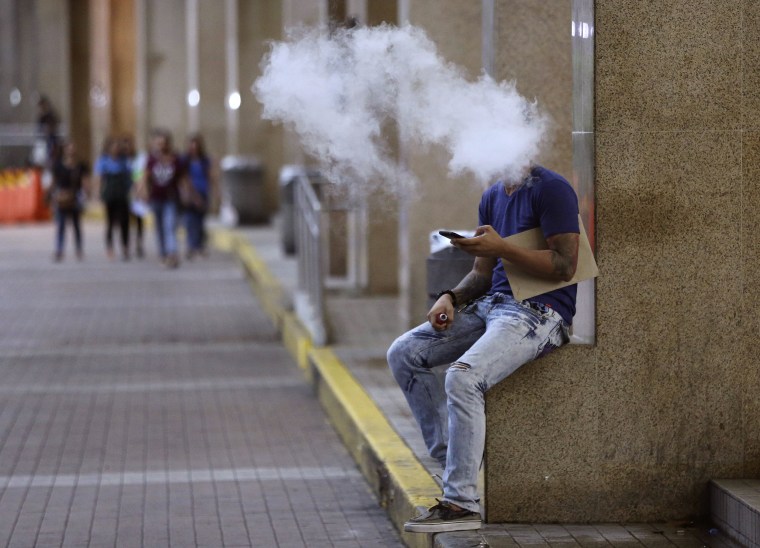Makers of e-cigarettes claim that their products are safe, but a study published Wednesday shows that dozens of popular e-cigarette products are contaminated with bacterial and fungal toxins that cause lung disease.
The impurities found in the e-cigarettes — which are associated with asthma and chronic obstructive lung disease — were found in nearly a quarter of single-use e-cigarette cartridges and in over three quarters of e-liquids, the team at the Harvard School of Public Health found.
“Finding these toxins in e-cigarette products adds to the growing concerns that we have about the safety of e-cigarettes,” said Dr. David Christiani, study author and professor of environmental genetics at the Harvard T.H. Chan School of Public in Boston.
The researchers examined 75 popular e-cigarette products — 37 single-use cartridges and 38 e-liquids from 10 top selling U.S. brands. The products were classified into four different flavor categories: tobacco, menthol, fruit, and other; and screened for the presence of endotoxin and glucan, toxic inflammatory substances that damage the lungs.
They found that 17 of 75 products, 23%, contained traces of endotoxin, a potent inflammatory molecule found in bacteria, and 61 of 75 products, 81%, contained traces of glucan, a toxic substance found in the cell walls of most fungi. Exposure to these microbial toxins has been associated with a myriad of health problems, including asthma, reduced lung function, and inflammation.
The study also found that endotoxin concentrations were higher in fruit-flavored products, indicating that raw materials used in the production of flavors might be a source of the contamination.
The researchers noted that they did not know where the impurities came from and that the contamination of the products could have occurred at any point during or after the production of the ingredients. They hypothesized that cotton wicks used in e-cigarette cartridges could be one potential source of contamination, as both endotoxin and glucan are known contaminants of cotton fibers.
The authors noted that there was no scientific evidence to conclude that the current observed levels of endotoxin and glucan in the e-cigarette products were raising health concerns.
Mi-Sun Lee, a Harvard research fellow and lead author of the paper says exposure to additional toxic substances only strengthens the argument for stronger e-cigarette regulation.
“In addition to inhaling harmful chemicals, e-cig users could also be exposed to biological contaminants like endotoxin and glucan,” said Lee. “These new findings should be considered when developing regulatory policies for e-cigarettes.”
Christiani added that public education about the potential health consequences of long term e-cigarette use needs to be a bigger part of the e-cigarette conversation.
“There needs to be much stronger regulation of the production and purity of the compounds used in e-cigarettes," Christiani said. "People should not assume that e-cigarettes are safe,”
The use of e-cigarettes has been steadily climbing in recent years, especially among high school and middle school students. It’s estimated that more than three million high school students used e-cigarettes in 2018, up from 220,000 in 2011, according to the Centers for Disease Control and Prevention.
The national public health agency also found a 78% increase in e-cigarette use by teens from 2017 to 2018. The increase was so worrying that the Food and Drug Administration announced a series of actions aimed at cutting underage access to vape products.
Public health experts have been alarmed by the lack of knowledge surrounding teen e-cigarette use.
Recent studies have found that many teens who use e-cigarettes aren’t aware they are inhaling nicotine when they vape, even though they are often taking in high levels of the addictive substance. Furthermore, many are ingesting cancer-causing chemicals, similar to those found in combustible tobacco products — and the popular fruity flavors appear to be the worst.
“I don’t think e-cigarettes are safe for anyone, especially kids,” Christiani told NBC News. “Parents should be very concerned. For one there is nicotine delivery that is very addictive and can lead to use of combustible tobacco products. Two, people may be inhaling biological toxins and carcinogens unknowingly.”
The results of the study are published in the online journal, Environmental Health Perspectives.



